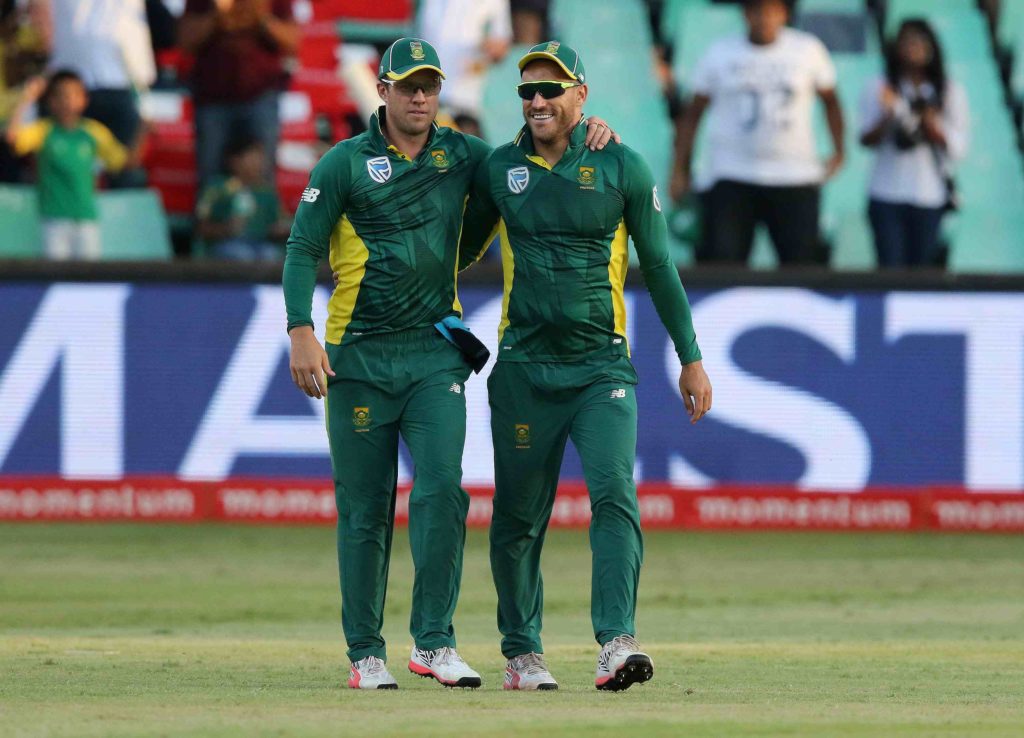No 1 in the ODI rankings. No 2 in the Test rankings. The Proteas can reflect on a very successful season.
Russell Domingo must have thought he was in for a long slog in 2016-17. The new season started as the past season ended: in disappointment. An early exit from the Tri-Nation series in the Caribbean in June merely compounded the beliefs that the Proteas were on a sharp downhill slide. On the eve of the Test series against New Zealand in August, the Proteas slipped to No 7 in the Test rankings.
But then came that two-match stint against the Black Caps last August. Dale Steyn and Vernon Philander’s return to the Test side, which, along with a fresh injection of belief and team spirit sparked by Faf du Plessis being handed the Test captaincy, became the start of near invincibility for the next seven months.
A one-off ODI against Ireland in September isn’t exactly high priority on the international schedule, but little did the Proteas know how much significance it would bear. Three players made their debut that day. One was Temba Bavuma, who became the first black African to score an ODI century, and the second to score a ton on debut for South Africa. Another was Andile Phehlukwayo, who has become a fixture in the side after showing, on numerous occasions, that he has the appetite for international cricket. The third is Dwaine Pretorius, who forms part of a quadrant of all-rounders that the proteas can boast in the 50-over format.
That victory against Ireland was the start of their best stretch in the format for over 11 years. Whitewash series victories against Australia and Sri Lanka, and victory in the first ODI against New Zealand in Hamilton made it 12 wins in a row. Only Australia have bettered that run in the history of the game, when they won the World Cup in 2003. Winning the series 3-2 against New Zealand allowed them to claim the status as best ODI side on the planet.
And then there were the Test series, all in the absence of AB de Villiers. That 1-0 victory against New Zealand followed a 2-1 victory in Australia, a 3-0 sweep against the Sri Lankans, and another 1-0 steal against the Kiwis in their own backyard. This was enough to take them up to No 2 in the world. From No 7. There are few comebacks quite like it in Test history.
Winning becomes a habit, and this certainly rings true with the South Africans, who have found ways to win against the odds in some of their matches. Top-order collapses have left the side needing to do miraculous repair jobs, none less so than in the second Test against New Zealand in Wellington. A precarious 94-6 became 359, which led to an eight-wicket victory. Success doesn’t come without a bit of luck, and rain arguably saved the Proteas on day five of the third Test to win the series.
It’s a fighting spirit that has become synonymous with the way Du Plessis has led his troops throughout this Test period, as well as the ODI series against Australia. The way the team rallied behind Hashim Amla’s stern, albeit with a hint of pretence, defence of the mint-gate allegations against Du Plessis, won’t be swiped from the memories anytime soon.
The side haven’t always fired as a collective; individual efforts have often been needed. Dean Elgar and JP Duminy’s centuries in Perth allowed the Proteas to go 1-0 up Down Under, and Elgar’s record-breaking 548 balls faced in the first Test in New Zealand probably spared their blushes. But let’s not forget the way Philander and Rabada stepped up in that Test in Perth when Steyn went down with a shoulder injury. And when Phehlukwayo aided David Miller and De Villiers in sensational run chases against Australia and New Zealand in Durban and Hamilton respectively.
Du Plessis hasn’t only led the way through his captaincy, but his stats with the bat have been nothing short of remarkable, and I’d be very surprised if he doesn’t win Player of the Year at the CSA Awards in May. In 11 Tests, he’s scored 744 runs at 57.23. In 20 ODIs, he’s amassed 999 runs at 62.43. Quinton de Kock could be a close second. In 11 Tests, 926 runs at 54.47. In 22 ODIs, 954 runs at 45.42. Kagiso Rabada will be in the running once again, too. In 11 Tests, 47 wickets at an average of 23.17. In 20 ODIs, 27 wickets at 31.03.
The selectors need to take credit for the way they’ve navigated the transformation targets with relative ease and filled the absences of De Villiers, Kyle Abbott and Rilee Rossouw, as well as the injured Steyn. They’ve managed to unearth the likes of Phehlukwayo and Lungi Ngidi, as well as finding a frontline spinner for Tests in Keshav Maharaj. In fact, they’ve used the targets to their advantage, for players like Phehlukwayo and Ngidi might not have gotten a chance without the targets, but we’ve all been able to see that they are special talents.
There’s still, as always, work to do. They need to sustain this period through to the Champions Trophy, and they need to find a settled opening pair, as well as a No 4, in Tests. For now though, it’s a chance to reflect on the success, and give a toast to the numbers. Eight series wins. One Test defeat. Three whitewashes.
Photo: Anesh Debiky/Gallo Images







